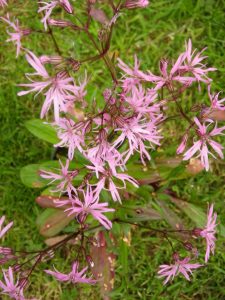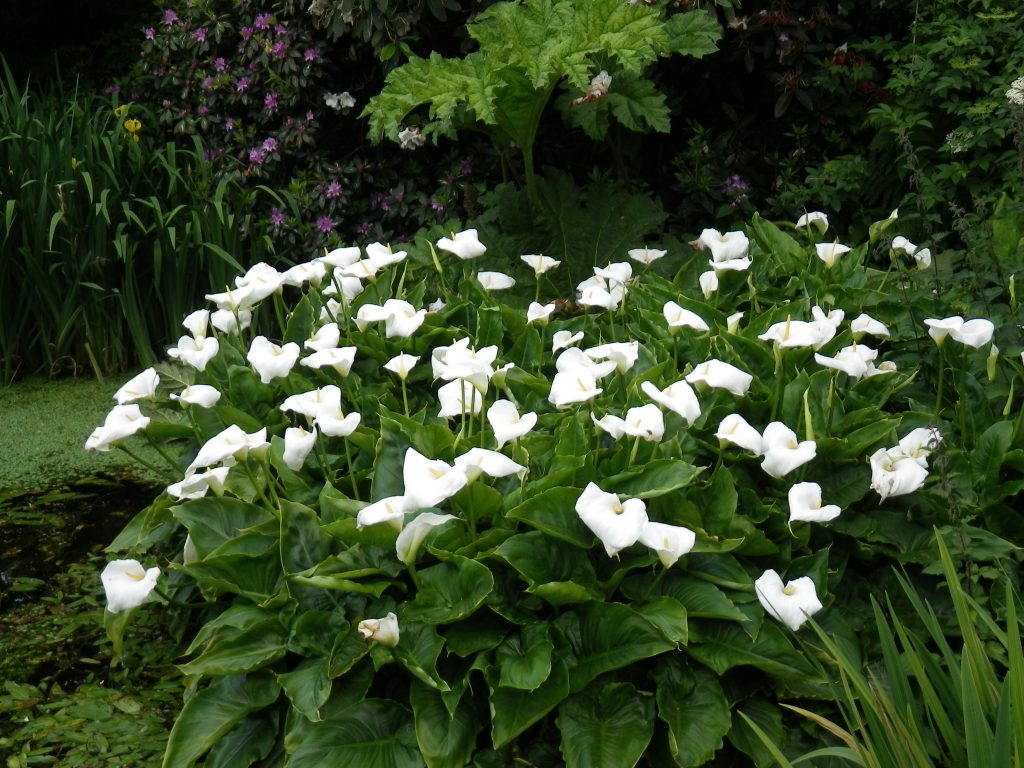Welcome to my blog; I wanted to answer a common question asked by so many customers:
What is the difference between a marginal plant, a bog plant and a moisture loving plant?
 Well, a marginal plant has evolved to be able to survive as water levels rise and fall through the year; it can survive periods of total immersion when dormant (usually in winter) and periods when the water may all but disappear in summer, though usually there is moisture still present deeper down. These are the plants that you can successfully grow in baskets on your pond shelves. Some plants will grow quite happily in totally saturated soil or in shallow water provided that the foliage is not submerged, these are often described as marginal plants when they are not. Some authors get their knickers in a twist about this, but most garden ponds do in fact have a clearly defined maximum water level. Provided that these plants are placed so that the foliage cannot be submerged at maximum water level, they can be grown as if they were true marginal plants. Examples are Ragged Robin (Lychnis flos-cuculi) and many short and creeping plants like Anagallis and mini Gunneras. There are other very adaptable plants like Lythrum and Zantedeschias that can be grown either in shallow water or in a garden border, and these can successfully be used to extend the theme beyond the pond boundaries.
Well, a marginal plant has evolved to be able to survive as water levels rise and fall through the year; it can survive periods of total immersion when dormant (usually in winter) and periods when the water may all but disappear in summer, though usually there is moisture still present deeper down. These are the plants that you can successfully grow in baskets on your pond shelves. Some plants will grow quite happily in totally saturated soil or in shallow water provided that the foliage is not submerged, these are often described as marginal plants when they are not. Some authors get their knickers in a twist about this, but most garden ponds do in fact have a clearly defined maximum water level. Provided that these plants are placed so that the foliage cannot be submerged at maximum water level, they can be grown as if they were true marginal plants. Examples are Ragged Robin (Lychnis flos-cuculi) and many short and creeping plants like Anagallis and mini Gunneras. There are other very adaptable plants like Lythrum and Zantedeschias that can be grown either in shallow water or in a garden border, and these can successfully be used to extend the theme beyond the pond boundaries.
Bog plants, technically, are little different from marginal plants and the term “bog plant” has been widely misused. For example, most “Bog Primulas” do not like standing in permanently saturated soil and will tend to rot in winter if planted like this. P prolifera and P pulverulenta can take it wetter than most, but still should not be planted in mesh pots in the pond itself. Bogs are usually very acid and typical bog plants are Cotton grass (Eriophorum) and sundews.
A moisture loving plant is one that grows best in soil that is permanently moist but not waterlogged. These conditions are rare in nature and hard, but not impossible, to create in most gardens. To create these conditions you need a lower layer of open material such as gravel or sand that acts as a reservoir, and an upper layer of free draining gritty soil in which the plants are grown. The plant is therefore dryish around the crown but has access to unlimited water deeper down by its tippy toes. See diagram below:
Idealised pond section
The liner is continuous under both pond and bog garden, ensuring that the reservoir under the bog garden is always full. Some topping up of the pond may of course be needed in long dry spells with or without the bog garden part. The usual advice given in most books on the subject is to dig a hole, line it with some old pond liner and stab it all over with a fork and then fill with planting medium. THIS IS UTTER TOSH. If you do this, you are basically creating a giant plant pot. It will be totally saturated in winter, since water will not easily escape, meaning that your plants will rot in winter. It will totally dry out in summer, since the contact with the deeper ground layers has been lost, meaning that your plants will die of thirst in summer. Failure almost guaranteed!



